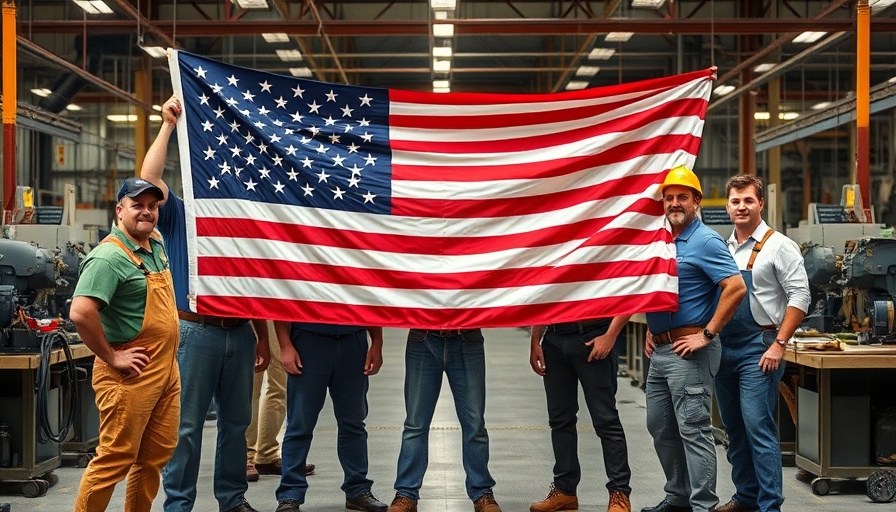
A Shift in U.S. Manufacturing: Companies Embracing Domestic Production
In recent years, the U.S. manufacturing landscape has begun to change, driven by various factors including government tariffs and the ongoing quest for economic stability. As President Trump's administration imposed new tariffs during his second term, several corporations announced significant investments in domestic manufacturing. Companies such as Johnson & Johnson have set ambitious goals, with plans to invest billions in U.S. facilities, showcasing a trend toward bolstering American production capabilities.
Tariffs and Their Impact on Job Creation
The effectiveness of tariffs as a catalyst for job creation is a topic of much debate among economists. While some companies attribute their growth plans in part to the administration's tariff strategy, the broader economic implications remain complex. According to Goldman Sachs, the overall evidence suggests that while tariffs may slightly increase employment in certain protected sectors, they might provoke job losses elsewhere. Thus, while tariffs aim to fortify the U.S. manufacturing sector, they also introduce economic risks that warrant careful consideration.
Corporate Investment Moves: A Mixed Bag
Corporations like Abbott Laboratories and other major players in the healthcare and technology sectors are leading the charge with substantial investments in U.S. manufacturing. Abbott announced a $500 million plan to enhance production facilities in Illinois and Texas, set to begin operations by year's end. These corporate commitments highlight a strategic shift towards domestic manufacturing that many view as a positive step for job growth and economic development in key industries.
Factors Driving Manufacturing Decisions
Experts emphasize that decisions around where to establish manufacturing operations hinge on a multitude of factors beyond tariffs. Labor costs, energy pricing, tax regulations, and political climate significantly influence corporate strategies. For companies to make substantial shifts, they require a supportive environment that nurtures innovation and growth. While tariffs can offer some relief for domestic producers, they need to be part of a broader framework of economic policy that encourages sustainable development.
Looking Ahead: What the Future Holds for U.S. Manufacturing
The future of U.S. manufacturing is poised to be shaped by a combination of policy decisions and corporate strategies. If tariffs continue to evolve, economic incentives will likely play a critical role in how businesses allocate resources for manufacturing. Companies might venture into emerging markets or shift their focus to industries where domestic products can effectively compete with imports, suggesting a dynamic future ahead.
Taking Action: What Consumers Need to Consider
As these developments unfold, consumers should remain aware of the implications of domestic manufacturing investments. Understanding where products come from, how they are made, and their economic impact can lead to informed purchasing decisions. By supporting U.S.-made goods, consumers contribute to a stronger economy and the job market. It's essential to consider the origins of products and how they align with personal values of sustainability and community support.
Conclusion: The Significance of Manufacturing in the U.S. Economy
The pivot towards increased U.S. manufacturing reflects a broader desire for economic resilience and job creation. While challenges such as tariffs and global competition remain, the investments being made today by corporations signify a commitment to fostering a robust manufacturing sector. Consumers are encouraged to engage with these changes and consider how their choices can support the evolving landscape.
 Add Element
Add Element  Add Row
Add Row 



 Add Row
Add Row  Add
Add 


Write A Comment